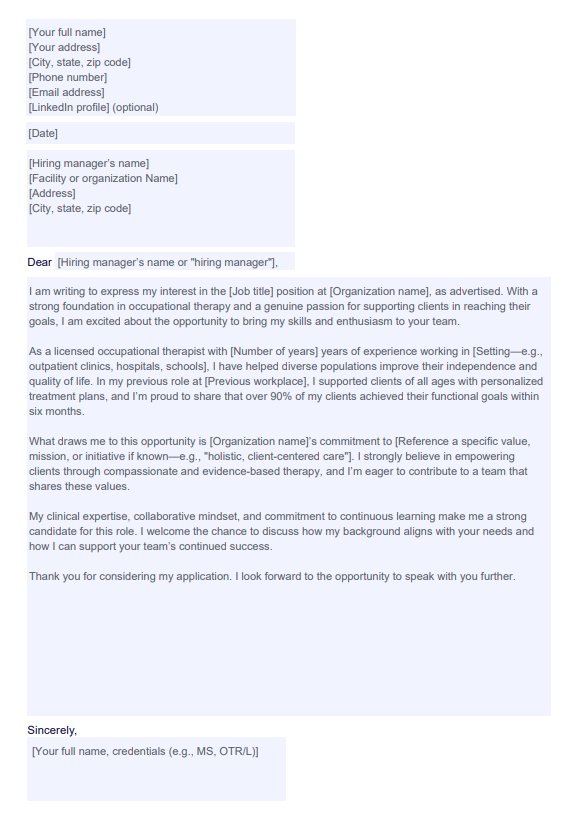Start by introducing yourself, stating the position you're applying for, and briefly highlighting your clinical experience and relevant skills. Tailor the content to match the job description and show how your background aligns with the facility’s needs and values.

Occupational Therapy Cover Letter
Download Carepatron's free occupational therapy cover letter PDF template and craft impactful applications for OT roles and positions.
Occupational Therapy Cover Letter Template
Commonly asked questions
If the hiring manager’s name is known, address the letter to them directly (e.g., “Dear Ms. Smith”). If not, use a professional greeting such as “Dear Hiring Manager.”
A strong short cover letter briefly states your interest in the position, highlights key qualifications, and ends with a confident call to action. Example: “I’m writing to express interest in the pediatric occupational therapist position at [Facility Name]. With a background in sensory integration and patient-centered care, I’d welcome the opportunity to contribute to your team.”
EHR and practice management software
Get started for free
*No credit card required
Free
$0/usd
Unlimited clients
Telehealth
1GB of storage
Client portal text
Automated billing and online payments











